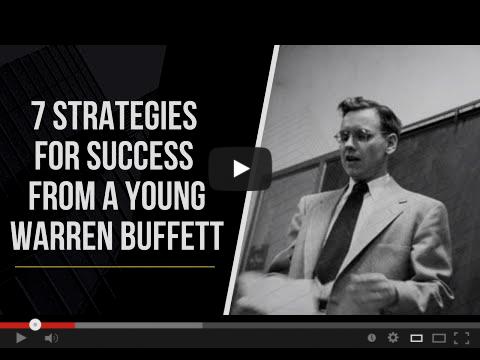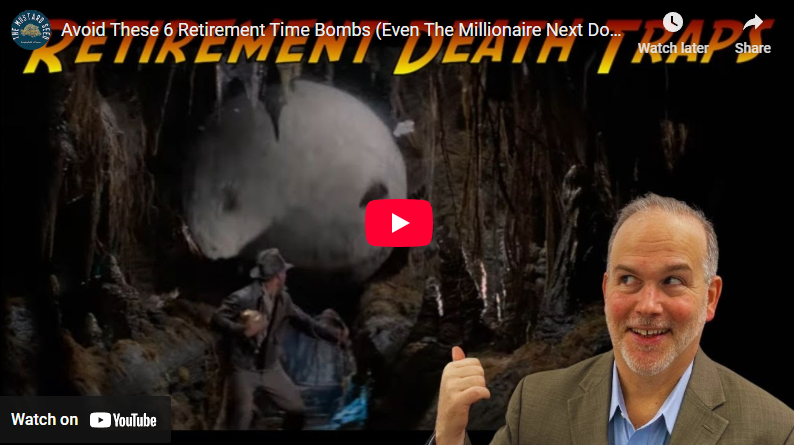For those like myself who follow Warren Buffett and Berkshire Hathaway, we can learn a lot from past letters to shareholders. We note what Buffett or Munger is currently buying and determine what makes sense for our portfolios as well. Many have done well following and cloning their portfolios. Larger purchases are also public knowledge for all to see via SEC filings. But I believe some of the most eye-opening Buffett insights are found from looking at the earlier partnership letters which show how he operated when he was still managing millions rather than billions.
From 1956 to 1969, Warren Buffett established a track record with his investors in the Buffett Partnership that is now legendary. When he first started, he wanted to make sure that those who invested with him were a good fit, understood his process and practiced enough patience to allow Buffett to do his best for them.
What were these famous “ground rules” from Warren Buffett?
1. In no sense is any rate of return guaranteed to partners. Partners who withdraw one-half of 1% monthly are doing just that—withdrawing. If we earn more than 6% per annum over a period of years, the withdrawals will be covered by earnings and the principal will increase. If we don’t earn 6%, the monthly payments are partially or wholly a return of capital.
From the onset, Buffett tries to set expectations and be sincere. There are no guarantees, and anyone who promotes zero downside is either utilizing expensive insurance to provide this or they are not being entirely truthful.
2. Any year in which we fail to achieve at least a plus 6% performance will be followed by a year when partners receiving monthly payments will find those payments lowered.
Buffett feels the best time to be buying stocks is usually when returns and performance are depressed. Too many partners withdrawing capital would limit Buffett’s ability to attack when the market was down, and limit future performance if/when it recovered.
3. Whenever we talk of yearly gains or losses, we are talking about market values; that is, how we stand with assets valued at market at year end against how we stood on the same basis at the beginning of results for tax purposes in a given year.
Again, Buffett wants to set expectations. He is simply being transparent about how performance will be measured so that there are no surprises.
4. Whether we do a good job or a poor job is not to be measured by whether we are plus or minus for the year. It is instead to be measured against the general experience in securities as measured by the Dow-Jones Industrial Average, leading investment companies, etc. If our record is better than that of these yardsticks, we consider it a good year whether we are plus or minus. If we do poorer, we deserve the tomatoes.
For clients we like to establish Family Index numbers to determine what rate of return is needed for clients to achieve their goals over time. Feel free to follow this link to learn more.
As we have noted before, we feel the best benchmark to base our models against are the Morningstar Target Risk Indices. They are more diversified than the S&P 500 or any basic 60/40 stock/bond portfolio.
The Buffett partnership agreement established his compensation against a set benchmark and the risk-free rate (treasuries), however.
5. While I much prefer a five-year test, I feel three years is an absolute minimum for judging performance. It is a certainty that we will have years when the partnership performance is poorer, perhaps substantially so, than the Dow. If any three-year or longer period produces poor results, we all should start looking around for other places to have our money. An exception to the latter statement would be three years covering a speculative explosion in a bull market.
Stating expectations on future performance again, Buffett warns against the possibility of a mania where asset prices become wildly overvalued.
6. I am not in the business of predicting general stock market or business fluctuations. If you think I can do this, or think it is essential to an investment program, you should not be in the partnership.
This ground rule is classic Benjamin Graham philosophy. As Graham’s student, Buffett was fully convinced that trying to time the market was a fool’s errand, and he didn’t want his investors thinking he had any sort of ability to.
It goes back to the theme that is constant in many of Warren Buffett’s ground rules—that he wants to set expectations, and he generally wanted to temper these expectations.

Buffett eats his own cooking. This is the most important proven metric to determine how well an asset manager does over time. A few years back I wrote an article entitled Lessons from Jack Nicklaus which included a few studies on predicting manager performance. Owning a significant percentage of the fund is one major predictor in these studies for manager outperformance.

Feel free to follow this link to the “Owners Manual”


Investment Advice offered through Innovative Advisory Partners, LLC, a registered investment advisor.







